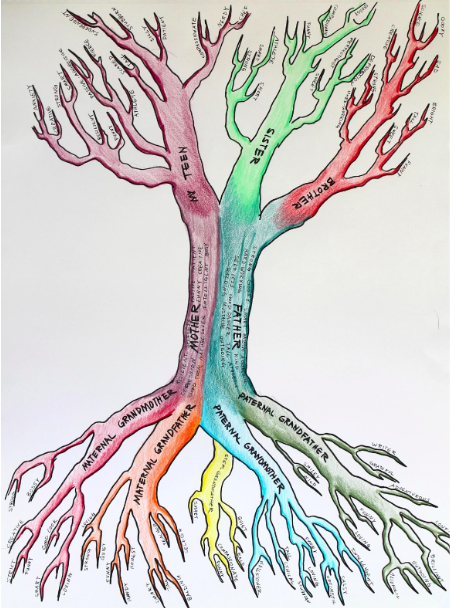Art Speaks- Fieldwork in Therapeutic Settings
By Maggie Willis, Art Director
Fieldwork is one of the programs of The Field, an artist-founded organization in New York City. Fieldwork is a unique forum for artists to share developing works without explaining their pieces, and exchange non-corrective or suggestive feedback, peer to peer. An experienced facilitator guides incisive and stimulating critiques. For more information go to www.thefield.org
Fieldwork rocked my world from day one. As someone who went to a private East Coast art school, I was no stranger to large departmental critiques. I learned what I had done “right” and what I had done “wrong.” Sure, this type of critique helped me to build a thick skin and develop my artwork technically speaking, but I always felt that something was missing. Then I was introduced to Fieldwork. A new world of understanding was opened up right before me, as I learned that my art had emotional and narrative content, and that it affected people on a deeper level than just being “beautiful.”
Over the years I became a Fieldwork facilitator and fell madly in love with the non-suggestive peer feedback structure. It is no surprise, then, that when I became the Art Director at Eva Carlston Academy, it was a no-brainer to include it into the curriculum. I have found that it is a great technique for critiques in class, but more importantly, it is a powerful therapeutic tool.

In our Art as Therapy groups, group members create artwork, then go through several sessions of processing their work. Using Fieldwork, they do not explain their art. They must let it speak on its own. Group members learn what their art says about these topics without being able to defend it.
The Fieldwork guidelines for “no disclaimers” is the first step to nipping this defensiveness in the bud and letting viewers have an authentic response to artwork and interpret what is right in front of them, without descriptions from the artist. These young women have to sit (very uncomfortably at times) with the feedback and allow for their peers to form their own opinions and interpretations of their work, whether it is “right” or not.
They also have to learn how to not take these interpretations personally, even though the art projects are directly and intimately personal. They also learn that, whether the viewers “correctly” perceive their intentions, their artwork speaks on its own.
Many of my students have admitted that, while the Fieldwork process was painful, it was enlightening. They describe how they thought they had been successfully hiding what was really going on for them, but learned that their artwork exposed their inner truths. Their art was speaking volumes about their trauma, suffering, and core issues. It was a scary process, realizing that they were exposing more than they intended. But, in a safe environment, surrounded by peers who were exposed to the same levels of vulnerability, it became a bonding experience – a way to learn about and relate to others. They learned that others actually DID get them. They didn’t feel so alone, knowing that others could see their stories, their pain, and their experiences. And this is a place for healing to begin.
Call: 801-449-0089
Address: 4943 S Wasatch Boulevard, Salt Lake City, Utah 84124
